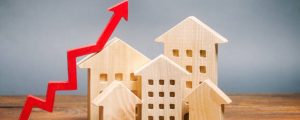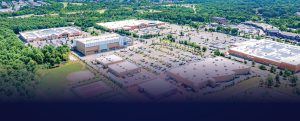Los Angeles Apartment Investors
The year 2022 has proven sobering for apartment investors. After more than a decade of cheap debt, the party has finally come to an end. This year, the Federal Open Market Committee has increased interest rates five times. By September, the prime rate reached a range of 3% to 3.25%, the highest since 2008, and more increases are on the horizon. By the end of the year, the committee expects interest rates will be at least 4.25% or as high as 5%. This is the fastest escalation in interest rates since the 1980s, and it is giving apartment investors pause.
Click to View Article on GlobeSt.com
Taylor Avakian, an associate vice president at Matthews Real Estate Investment Services and an expert in the Los Angeles multifamily market, has seen a slowdown in deal flow in the second half of 2022. “Investors are feeling the brunt of the excessive rise in interest rates. Most buyers secure financing, and at two full points higher, interest rates are dragging down returns,” he says. Avakian works with a broad spectrum of investors, from family offices to institutional buyers, and from his vantage point, all investor types are exercising more caution.
The Investment Community Is Divided
Investment activity is waning, but it isn’t happening evenly. Private investors carry greater risk when interest rates increase, because they utilize the debt markets more frequently and have fewer capital options when rates rise. “This has a huge impact on mom-and-pop owners who have owned these buildings for decades,” says Avakian. The trend has pushed private owners to become net sellers as a result. Institutional buyers, on the other hand, remain net buyers, because, as Avakian puts it, they have an obligation to deploy capital.
In contrast to earlier in the year when 1031 exchange buyers were fueling market activity and propping up prices, these buyers have now cooled buying activity. It’s in response to many of these deals no longer penciling, Avakian notes, as buyers are required to put up more equity to offset higher rates.
Headwinds Hit High-End Multifamily
Class-A buildings stand to suffer the most as interest rates rise. Higher-end assets have already softened in terms of price and transaction volume, according to Avakian. Prior to the upward trend in rates, class-A apartment properties were trading at 3% or high-2% cap rates. “That doesn’t pencil anymore for anyone,” says Avakian. “Investors would rather put their money in bonds at 4% than a 3% multifamily class-A building.”
Instead, investors have preferred affordable housing as interest rates rise. “It is a good flight to safety, and I think a lot of investors are moving in that direction and incorporating affordable housing into their portfolio,” says Avakian.
Investors are optimistic about the near-term future. In the next six months, Avakian and his clients expect to see improved opportunities and pricing. “It is worth your time to keep your eye on the ball and your head in the game. If a deal makes sense today, write an offer.”










